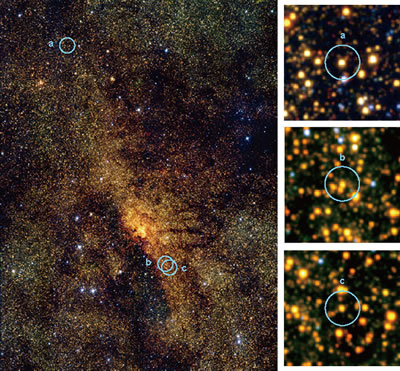Three classical Cepheids and their impact on the star formation history in the Galactic Nuclear Bulge
| Science

The region within a few hundred light years of the central blackhole of our Galaxy, often called the Nuclear Bulge, presents us with various interesting objects and phenomena. We discovered in this region classical Cepheid variable stars, pulsating supergiants, whose ages can be derived accurately from their periods. All three of our Cepheids have pulsation periods near 20 days and ages close to 25 million years, suggesting that active star formation occurred at the period around their births. In contrast, the absence of shorter-period Cepheids shows that the star formation rate was lower between 30 and 70 Myr ago. We suggest that the rate of star formation in this region has changed on a time scale of a few tens of million years possibly due to a stochastic gas inflow into the Nuclear Bulge.
Paper information
- Title:Three classical Cepheid variable stars in the Nuclear Bulge of the Milky Way
- Author:Matsunaga, N., Kawadu, T., Nishiyama, S., Nagayama, T., Kobayashi, N., Tamura, M., Bono, G., Feast, M. W. & Nagata, T.
- Journal:Nature (DOI: 11.1038/nature10359, published online on 24 August 2011)
Links
- University of Tokyo
- Kyoto University
- Nagoya University(Japanese, PDF)